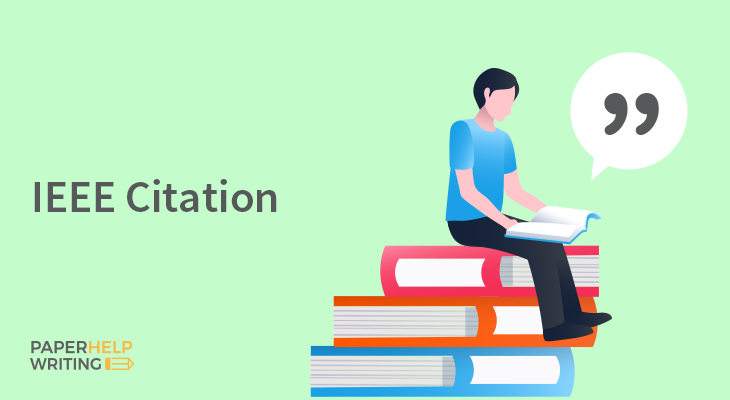
Would you like to be an expert in writing IEEE format assignments? Remember, the fundamental function of a citation style is to give the reader the full information regarding the sources of information used. Students in technical disciplines such as Computer Science, Information Technology and Web Communication should know about writing their assignments utilizing this format. Although IEEE format is widely recognized, some students tend to have problems in following the more delicate details such as in-text citations and referencing. This article will provide the basic rules to follow in producing a quality paper. Furthermore, the professional paper writing services for IEEE papers are also available on this website.
What is IEEE Format
IEEE in full is the Institute for Electrical & Electronics Engineering which is an organization that supports the availability of information in the engineering fields. Despite being a popular formatting style in technical articles and journals. The main parts of an IEEE structure are Referencing and in-text citations.
The Basics of In-text Citation in IEEE Formatting
In writing IEEE papers, it is not just a matter of mentioning the author’s name or the page number or the date an article was published. The most important aspect is referring to the source by indicating its number in a square bracket and ensure it corresponds with the full citation as mentioned in the reference list.
Ideally, the following steps will be necessary when you intend to create in-text citations in IEEE.
- Place the citations that are in bracket within the line of the text before placing the punctuation by placing the spaces before the first bracket.
- Ensure the sources are numbered before placing them in the paper. Once you paraphrase information from a particular or external source, the number will be used throughout the paper. For instance, if the source numbered [1] is used severally in the text, it implies that information was obtained from the same source
- When you use multiple sources simultaneously, separate the numbers in bracket using a comma. For example, [2],[9].[18]. Alternatively, instead of separating them using a comma, you may decide to use a dash. For instance, [3],[33] or [5] – [4]. However, the selected option should be utilized throughout the paper.
Fundamentally, the academic scholars from the Murdoch University recommend the following examples when using in-text citations in IEEE style of referencing.
“…is acceptable when using the SPSS program [28]”
“The social network analysis theory was developed in 1999 [2].”
“Shannon [12] argues that communication…”
“Various surveys [7], [9], [34] established that…”
“For instance, the numerical data regarding the research can be found in [22].”
Creating IEEE Reference Page
The reference page in IEEE style is placed at the end of the paper starting on a fresh page. The list of references is then listed numerically depending on the other they have been cited in the article. Unlike different referencing styles like APA, MLA, and Harvard, IEEE referencing does not follow alphabetical order. Instead, the sources are arranged according to the numerical order they have been used in the text starting from [1] and progressing in ascending order. Thus, when developing the reference list, only one reference number per source is acceptable. All the principal word verbs, adjectives, and nouns are written capitalized except conjunctions. Although your professor may recommend using a different line spacing, the recommended line spacing is 1.5 inches. Additionally, you should consider the following elements when you want to have an outstanding reference that can fetch good marks for formatting.
- When writing the title, the word ‘References’ should be centered or left aligned at the beginning of the reference list.
- Every source should have a hanging indent with the numbers in the square bracket at the left side of the line. These numbers are essential for the readers to understand the order of materials as used in the in-text citation. As mentioned earlier, no source can share the numbers even if the author of the books are the same but different articles.
- The first and second name of the authors should always be represented with the initials. Perhaps the best illustration can be drawn from the following example; Joseph Lee Murugi will be written as J.L. Monroe. (Take notes on the use of periods)
- When the sources are journals, books, website or E-books, the titles should be written in italics.
- Although personal interviews are usually not cited, it is important to recognize the speakers in emails, speeches, and interviews. For example, In a personal interview with the President of the United States, Donald J. Trump, he suggested that the best way to deal with illegal immigrants is deportation.
- Letters can also be cited but not necessarily included in the reference list. For instance, In a letter to the Secretary of Defense, Professor McNamara highlighted the necessary steps to deal with intelligence information regarding the Vietnam war.
Useful Tips for a Complete Reference
- Record all the descriptive elements that will be necessary to create a citation. You may need a draft book where details regarding the book title, page numbers, and book chapters can be recorded. The following elements can be recorded in order
- Author’s Name including the initials
- The title of the Article/publication
- Series if applicable
- The volume number, edition, and issue
- The editor or translator of the text
- Publisher and city of publication
- Year and page numbers if applicable
- Capture the details of internet resources for E-books, Journals, and Websites. You may need to copy and paste URL to avoid possible omission or confusion.
- Not all internet resources have the apparent Therefore, you may be required to apply your judgment about the decision to use the Organization or the owner of the website. You can contact the owners using the live chat if available to inquire about an articles authorship that you are not sure. Remember to be polite when conversing with customer care when you need help.
Examples of IEEE References
In case the book is a print, the citation will appear in the following order in the reference list
[n] A.A. Author’s Name, “Chapter title,” Title of the Book, edition ed. City, Country in case outside the US: Publisher’s abbreviation, year of publication, chapter no., section, pp. xx-xx.
[1] B.J. Allan, “Components of a computer system,” Introduction to Computer, vol. 23, Multidimensional systems, D.A Tyrese, San Diego: Academic Publishers, 2014, pp. 122-129
[2] N.A Ndalu, “Telecommunication networks in the 21st century,” in Encyclopedia of Telecommunications, 1998, pp. 34-122
Reasons Why You Should Always Reference Your Work
Referencing refers to the act of acknowledging the ideas, information and intellectual work of other writers. While the process revolves around the aspect of being ethical, there are other significant benefits of ensuring that your work is accurately referenced. These reasons are as follows;-
- Increases the credibility of your research
When your document is correctly referenced, the study becomes more acceptable because the arguments are well backed with facts and increase the trust of the readers. Moreover, it increases readership because no one wants to read baseless arguments without a significant theoretical backing or points from other credible sources. Therefore, always develop the habit of pursuing information from the reliable database available online to increase the authenticity of your work.
- It is a strategy to avoid Plagiarism
When you use information or ideas from other authors without acknowledging them, it amounts to plagiarism which is unethical in academic papers. Most professors have a dismissive attitude towards plagiarized materials because they understand the pain of using other people’s work without giving them credits. IEEE defines plagiarism as the use of research data, opinions, images and ideas without citing the authors. Furthermore, there is the guilt that accompanies plagiarism. You can lack the confidence to present your work in a large audience because of the fear that the ideas are not original. Therefore, to avoid a confrontation or bad grades, always ensure that borrowed ideas are well cited. You can still prevent accidental plagiarism by running your work on piracy checking software or websites to ascertain that the paper is free from plagiarism.
- Strengthens the thesis statement
A thesis statement is usually the last sentence in the first or second paragraph in an academic paper that presents the primary argument of the article. Referencing the points such as facts and figures that are utilized in the paper tends to strengthen the writing by making it objective.
- Provides the reader’s opportunity for further reading
The idea of citing the sources acts as a signpost. When one is reading your article with external sources that are accurately mentioned, they might decide to use the citation details to follow for more information thus contributing to further understanding. You might have quoted a small part of the subject but citing it in the right way has more essential benefits to the reader.
We Offer Help on IEEE Papers
Are you a High School, College or University student in need of custom written essays, research proposals, Masters’ thesis, Dissertations or Personal Statements to join an institution. Worry no more. We have an established team of professional writers and editors who are willing and available to help you in creating a unique and the highest quality possible. It is now the most appropriate time for you to take a brave step and order with us and we will not disappoint. It goes without saying that before you receive the final paper, it goes through a team of competent editors who offer proofreading services saving you the time and money.

